Cory Huff's Blog: The Abundant Artist Goodreads blog, page 22
March 7, 2018
Is Being Busy the Same as Being Successful?
Is Being Busy the Same as Being Successful?
When You’re Working For Free and are the Last One to Know
by Stephie Jones
Many creatives become so engrossed in the fun and exciting nature of their job that they completely ignore the business side of their…well, business. We’ll often wonder why someone who was so outwardly successful suddenly ended up closing up shop.
The Trap
You’re busier than ever fulfilling orders and living the dream. Your inbox is full and so is your voicemail. You’re busy busy busy and everyone knows it, so you must be successful, right? Well, maybe.
This is a great time to take stock and do the dirty—running your numbers. It’s good to remember here (albeit no fun) that you don’t actually “earn” what you bring in. That’s your Gross Revenue. Once you subtract all Expenses you then have you Net Income (and for many artists/artisans, this is your salary). So I’ll caution you here, don’t be fooled off the bat by a big number and immediately pat yourself on the back for quitting your unfulfilling day job. It was probably still the right choice, but let’s make sure you’re getting paid properly.
How to do the Dirty: Running Your Numbers
Oh barf. Math. I hated accounting in college and you probably did too, if you opted to take it. If you’re in the first year or two of business and have the ability to work from home, you may be skimping on some of the more formal aspects of your job as a creative—such as getting out of your pajamas, brushing your teeth, and accounting.
Basic accounting is very simple.
Gross Revenue [All the money you earned] – Expenses [Every single expense you had] = Net Income
It’s important that your inputs (income and expenses) are accurate. You can use a system like Quickbooks, Cashboard or just an Excel or Numbers spreadsheet. Take the time and enter each expense and all sales/income. This kind of thing can be mind numbing, so as a good practice going forward I recommend tackling record keeping on a regular basis. My business allows me to handle this throughout the year every 2 weeks or so.
Wait. I Worked my Tail Off for THAT?
So now you’ve run the numbers and you might realize you’re in the group of creatives that’s saying “Oh F@#k.” Don’t panic. So you worked harder then you ever have before, putting in extra hours every week and you’re not certain you made minimum wage. Here’s how to begin righting the ship.
Track Your Time.
Have an understanding of how much time it takes you to create each product or in my case, it would be a painting. This involves some boring old time tracking. If you don’t know how long something took in the past, don’t give up. Just start now. I like to round up to 15 minute increments when tracking my time to keep the math easy.
Know Your Expenses.
Track them. If they’re over 50% you’ve got some work to do. A target for most creative businesses with a tangible product would be 45%. Photographers and Graphic Designers can get away with a much lower expense ratio.
Keeping good records can be made easy with a simple system. The key is finding one that works for you. I personally keep an accordion file near my desk and once I’ve logged my income or expense in my spreadsheet, I put a checkmark on the receipt and file it away (The IRS loves entrepreneurs and we are more likely to be audited than those employed by a business. It’s wise to keep careful records going back seven years). I have simple category headers for my accordion file like “Utilities,” “Cell Phone/Internet,” “Education,” “Store Receipts,” etc. What I like about this system is that at the end of the year all of my records are in one place. I also keep other important items in there, like copies of my monthly Virginia Retail Sales Tax payments and my business license. It’s portable and easily goes with me to the accountant at tax time and is somewhat organized.
Lower Your Expenses.
There are many ways to get creative with this so grab a friend to help you brainstorm. Some basics would be to buy materials in bulk on sale, band together with other artists to buy supplies in a huge order from a wholesaler, look for savings on recurring web site fees by committing to an annual plan vs. month to month, or sharing studio space.
Create a Pricing Formula.
Now that you know some rough numbers, check your pricing. Pick a product and analyze it. First, are you covering your hard costs with your pricing? Second, calculate how much you’re making per hour of work (or quarter hour of work if it’s not a time intensive product). How much are you paying yourself? Is that a living wage? How many would you have to sell to reach your salary goal? Is that a reasonable amount? Alter your price as needed and check it against similar products in the marketplace.
Don’t Leave Money on the Table.
I had a boss who used to say “Don’t Leave Money on the Table.” It roughly means, don’t lose money by being lazy. If you saw $20 on the ground, would you pick it up? It’s important to know your tax write offs as a business owner. If you have a dedicated studio space in your home you can write off a portion of utilities as well as some of your mortgage if you own your home. You can write off dedicated cell phones, mileage for travel, books, classes, etc. Make sure you’re tracking those carefully so you can take full advantage at tax time.
Raise Your Prices.
If you’re running around fulfilling orders and it’s non-stop, it’s time to analyze your prices. It feels great to be busy and in demand, but if you don’t examine your pricing you can fall into feeling like a success because you’re busy vs. being financially sound. Once you’ve tracked your time and expenses you’ll know better what needs to be done.
If you are covering your costs and earning your desired salary and are still crazy busy, then congratulations! Consider hiring help or raising your prices again to cut down on demand while increasing your revenue.
If you realize you’re working for peanuts, evaluate the market in an effort to raise your prices. Beware: when you raise your prices you will lose some customers that can no longer afford you. This is the idea. It slows your workload down while allowing you to bring in more revenue. Take this opportunity to tune in to your new target market. Get to know them better and make sure you’re reaching them effectively with your marketing efforts.
If you’re not paying yourself enough and raising your prices will price you out of the market for your product type, then it may be time to consider that this isn’t a profitable item unless you can find a way to cut your expenses. You may need to revisit your business plan and focus on your “winning” items—those that are profitable and sell well.
Create a Revenue Plan.
How much do you want to make this year? Figure out that number (this salary should cover your living expenses at the very least) and work backwards. If your salary/net income should be 45% of your gross income, you can quickly figure out what you need to earn in full for the year. Then break that down by month and then even week. Is that number attainable? If not, start brainstorming. What would you have to do to make that many sales in a week or a month?
Looking at the numbers can be scary, but avoiding them won’t save you from ruin. The best part about checking things out under the hood is learning what needs to be fixed and formulating a plan.
 Stephie Jones is a fine artist living and working in Virginia Beach, Va. A graduate of James Madison University (2002), she paints bright, lively and colorful work in multiple mediums including oil, acrylic and watercolor. Her work (original paintings and limited edition prints) is released in collections on scheduled release dates on her web site,
stephiejones.com
. Release dates and sneak previews of her upcoming work can be found on Facebook (
facebook.com/stephiejonesart/
), Instagram (
instagram.com/stephie_jones_art
) or by signing up for her e-newsletter.
Stephie Jones is a fine artist living and working in Virginia Beach, Va. A graduate of James Madison University (2002), she paints bright, lively and colorful work in multiple mediums including oil, acrylic and watercolor. Her work (original paintings and limited edition prints) is released in collections on scheduled release dates on her web site,
stephiejones.com
. Release dates and sneak previews of her upcoming work can be found on Facebook (
facebook.com/stephiejonesart/
), Instagram (
instagram.com/stephie_jones_art
) or by signing up for her e-newsletter.
The post Is Being Busy the Same as Being Successful? appeared first on Online Marketing for Artists.
February 28, 2018
8 Creative Ways to Use Extra Prints
If you have extra prints lying around your studio, it’s time to clear out the space and put them to work for you! Here are 8 ideas to move those extra prints and give your business a boost.
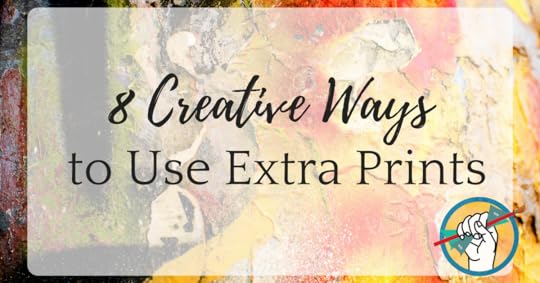
Host a print giveaway contest on your main social media platform.
Social media shares can count as entries. This is a common tactic with lifestyle blogs- following/sharing on each separate social media account counts as a separate entry, so entrants can increase their likelihood of winning if they share in more places. There are several apps and website plugins out there made to help you run these kinds of contests (Rafflecopter is a common one).
Run a sale exclusively for your email list.
Add value to your email marketing and increase the number of people clicking through to your website with an email-exclusive sale. Bonus: have a system in place to upsell them once they get there!
Send thank you mailings to loyal collectors.
Stay front-of-mind with your collectors by sending them a surprise print to thank them for their continued patronage (and perhaps suggest a new commission in the same mailing).
Run a flash sale on Instagram or Facebook.
A flash sale is a blink-and-you’ll-miss-it sale that can help you burn through inventory and get people interested.
Host an art show in a friend’s home and bring the prints to sell.
Run a giveaway to grow your email list
Every email subscriber is automatically entered to win. This is a great way to gather emails at art shows and outdoor fairs. For contests, make sure the item you’re giving away is not also for sale. If it is, you’ll likely notice that no one wants to purchase because of the slight chance that they could win it instead.
Donate to a community event or nonprofit
Listen to this podcast episode and check out this blog post for more on how to effectively partner with a nonprofit to grow your business.
Repurpose the print as part of a new art piece, or gift to a collage/mixed media artist who can give it new life.
Bottom line: there are so many ways to use your older, unsold prints, there is no reason to let them languish in your studio unseen. Put those prints to work for you!
Do you have any creative uses for those extra prints that are hanging around your studio? We’d love to hear about them in the comments.
The post 8 Creative Ways to Use Extra Prints appeared first on Online Marketing for Artists.
February 21, 2018
Accomplish More Than You Thought Possible
Last week, one of our Association members, a sculptor named Tom Harold, quit his day job. He has commissions lined up for months, and more interest than he can handle. He posted this awesome image of his quit date:
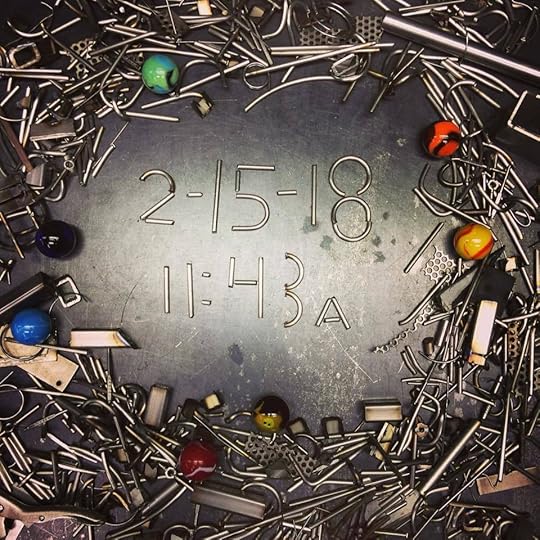
This is EXACTLY what we work towards in The Abundant Artist Association. Quit dates. First 5-figure commissions. First 6-figure years.
We’ve helped dozens of artists hit these milestones in The Abundant Artist Association.
How do we do this? Through a combination of courses and community accountability. Here’s what one artist, Nicola, had to say, “There have [been] quite a few days where part of me just wanted to flake out and not follow through with the goals I had set for myself, but the process of writing them down and then being able to check on them, then knowing it would throw off my previous week’s results motivated me to keep on track.”
After encouraging our artists to set specific, actionable goals, then showing them how to do that, they get results. Emilie had this to say just two days ago, “one of my goals was to sell 12 paintings and I’m 6 weeks in and have sold 6 paintings and have a plan for the next 6.”
Our community is full of artists making forward progress, from beginners to full time successful artists like Patricia Vargas, who we interviewed on our podcast in January.
If you would like to join us in the Association, click here to learn more. Enrollment ends tomorrow at midnight.
The post Accomplish More Than You Thought Possible appeared first on Online Marketing for Artists.
How to Sell Fewer Prints and Make More Money
Are you looking to inject some new vitality into your art business? Why not consider a limited-edition print run? This can be a great way to drum up new interest in your work. There are several reasons to consider a limited edition print run:
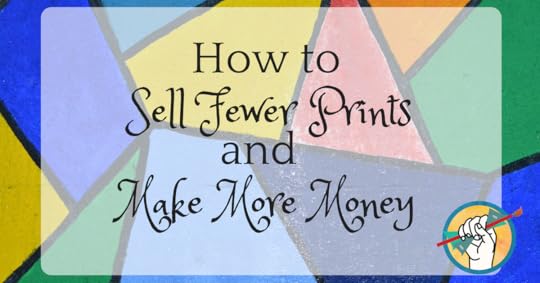
Increase the perceived value of your prints
We naturally perceive an item as more valuable if it exists in a finite quantity. You can use this to your advantage to increase the value of the prints and pique the interest of collectors both old and new.
Sell at a higher price point
A limited-edition print run can be sold at a higher price point than unlimited prints due to the increased value. This is especially true if the prints are hand signed and numbered (which they should be) and include a certificate of authenticity. Also be aware that a smaller print run (100 versus 500) will also allow you to increase the price of each print.
Sell out to increase value and market to your collectors
Selling out of a print run increases the perception of scarcity and can increase interest for collectors who didn’t get a piece this time around. Use this to your advantage when you market your next run of limited-edition prints- “last time they sold out within 1 week, so act fast!”
You don’t have to sell all of your prints in a finite quantity, but an occasional limited-edition print run, when marketed well, can be a great way to increase interest in your work and allow you to increase the income you make from prints.
Have you tried selling prints in limited editions? How did it work for you? Let us know in the comments!
The post How to Sell Fewer Prints and Make More Money appeared first on Online Marketing for Artists.
February 15, 2018
How to Use Prints to Sell Original Art
Have you heard the term “loss-leader” before? Don’t run away! You don’t actually have to lose any money. In fact, using a loss leader can increase your cash flow as well as the number of larger pieces and commissions you’re selling.
In the retail world, a loss leader is a product you use to get customers in the door. On its own, a loss-leader isn’t making you much money, if any at all. But it can be an incredibly powerful tool for pulling in new customers and getting them to buy more from you.
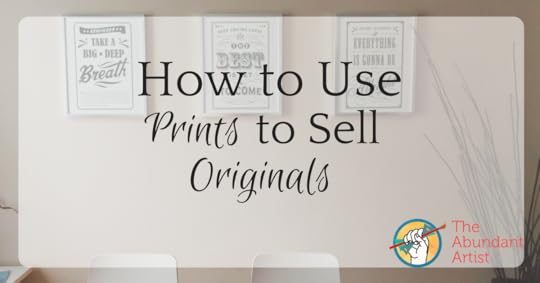
Why Use a Loss Leader?
If you keep an inventory of prints, or even if you have a lot of small originals or sketches/studies lying around taking up space, selling them at a relatively low price point (again, you don’t actually have to sell them at a loss) can free up valuable inventory space, and spark much-needed cash flow. But the most important thing it can do for you is expose you to new collectors, increasing awareness of your art and adding new customers to your email marketing list.
Make Sure Your Website is Ready
Advertising that you are selling something at a low price point is only going to help your business if you are prepared to follow up. This means your website needs to be ready and able to collect every collector and potential collector’s email address. It should be easy and apparent on every post, page, and listing how to sign up for your mailing list. If you are using a low-priced print to draw in new customers, the listing should point to or suggest higher-priced pieces. You also need to be prepared to nurture your new relationship.
Upselling & Collecting Information for Your List
Once you’ve collected your new customer’s email address, they should get placed directly in a nurturing campaign where they receive relationship-building emails from you. This is where you can gradually introduce higher and higher-priced pieces and commission work. The key is to stay front of mind with your new collectors. And be sure to let them know why they should be purchasing more from you!
The key to using lower-priced prints as loss leaders successfully is to commit to following up with your new collectors. For in-depth training on how to create a sales funnel, check out How to Sell Your Art Online 201: Sales Funnels. You can also read more about using prints and smaller originals as loss leaders here: How to Sell a $10,000 Painting Online.
Also keep in mind that you don’t HAVE to sell your prints at a loss. They can be a lucrative part of your art business. Read more about how to sell art prints:
Why You Should Diversify Your Art Business by Selling Prints
How to Get a Quick Win Selling Art Online
How to Run a Successful Print Studio
The post How to Use Prints to Sell Original Art appeared first on Online Marketing for Artists.
February 7, 2018
Why You Should Diversify Your Art Business by Selling Prints
In the business world, “diversifying” refers to ensuring that you have multiple sources of income by expanding into new markets, often with an entirely new product. The purpose of this is to make sure that even if one source dries up, either for a season or permanently, you aren’t left without any income at all. It’s a smart business practice for anyone selling a very specific product (i.e. art) to a targeted audience. One excellent and relatively easy way to do this is by selling prints.
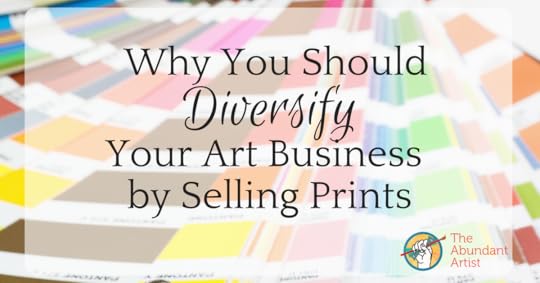
As you think about ways to diversify your business to ensure that you can weather the dry seasons, here are some things to consider:
If your gallery (or galleries) go under, where will your income come from?
If you are relying primarily on the gallery or galleries where your work is shown, you are putting a tremendous amount of faith in other people and other businesses. While it can feel like a relief to let somebody else do the heavy lifting of promotion and sales for you, there is always the chance that the gallery could go under. This is becoming more and more likely as the internet takes over retail in all areas. If your gallery goes under, will you be left with any income coming in at all?
Another means of building your list
Provided you choose a method that allows you to retain your customer’s information, selling prints is an excellent way to build your list. Hook them with an inexpensive print, and then pop them into your email marketing sequence and down the road they could be commissioning you for something at a much higher price point.
*If you’re going to go the print-on-demand route, ensure that you choose a service that allows you access to the customer’s email address. You can see which popular print-on-demand sites allow this by signing up for a free membership and checking out our POD site comparison spreadsheet in the free resource library.
Attract more customers by offering art at a lower price point than originals
As mentioned in the previous point, prints can be a great way to hook new customers, and then follow up down the road once you’ve got them on your list. If potential customers are balking at the price of originals, selling prints can be an excellent way to bridge the gap. (It’s also worth mentioning that if this is your experience, you probably need to look elsewhere to find buyers for your original work.)
The bottom line is that with the potential to increase your income, diversify your income streams, and expand your email list, there is no reason not to start selling prints of your work. For more resources on how to sell prints successfully, check out these posts:
Managing a Successful Print Studio with Patricia Vargas (podcast episode)
The Best Printers for Printing Your Art at Home
The post Why You Should Diversify Your Art Business by Selling Prints appeared first on Online Marketing for Artists.
January 31, 2018
It’s Okay to Let Go of Bad Goals
Over in the Association for the past month we have been discussing our goals for the new year. We use a specific measurement to evaluate whether our goals are worth pursuing using the acrostic SMART: specific, measurable, achievable, relevant, and timely.
Using this rubric to evaluate your current goals for your art business is an important first step to actually achieving them. If your goals are unrealistic, outdated, no longer sync with who you are and what you want, are too abstract or can’t be measured, or are WAY too advanced for where you currently are in your business…. it’s time to let go. But letting go of your goals can be a lot easier said than done.

The Sunk Costs Fallacy
Sunk costs are costs, be they effort, time, or actual money, that have already been paid. They’ve been sunk- you can’t get them back. As such, they have no legitimate bearing on the present, especially compared to what you really should be considering, which is how your actions will benefit and cost you in the future. This can be a hard concept to wrap your mind around, and it’s what gives the sunk costs fallacy such a powerful grip on our minds.
The sunk costs fallacy tricks us into thinking that we have to stick with a project in which we are no longer invested, simply because we spent so much time/effort/expense on it already. If you have spent time and money pursuing a goal for your art business that no longer feels right, or that upon further evaluation you realize really isn’t realistic or viable at the moment, it’s okay to let go. Consider this your permission. In fact, not letting go is probably going to hurt you even more than letting go of those sunk costs, painful as they may be.
Take the time to consider your goals for the year- where do you want to be three months from now? 6 months? A year? Apply the SMART rubric to your goals, run them by some people that you trust, and enjoy the freedom of letting go of the other stuff that’s weighing you down.
If you need somebody to help you evaluate your goals, you’ll find an incredible group of hard-working and insightful professionals in The Abundant Artist Association. Enrollment will be re-opening soon, so get on the wait list now so you don’t miss it!
For more on realistic goal-setting and the sunk costs fallacy, give our interview with Growing Gills author and prolific comic artist Jessica Abel a listen. It’s a good one!
The post It’s Okay to Let Go of Bad Goals appeared first on Online Marketing for Artists.
January 24, 2018
Share the Real You with Your Followers and Sell More Art
She’s bought more art from me than any other customer. Nope, she’s not my mom. Not my best friend, either. She’s a woman I met online more than three years ago through an acquaintance back when I was a career coach.
How did she become my biggest client? She followed my trajectory from a not-all-that-certain-about-it-career coach to body image coach right on over to full time artist, and she did it because I was personable, friendly, real, and, bottom line, she cared about me and my story.
And that, my artist friends, is how someone you met randomly years ago, who didn’t even know that you were a painter/potter/kitten hat knitter, will start buying your stuff. You make your true self known, you be nice to everyone, and I mean everyone, and you let people know what you’re up to, even if it’s completely different than what they expect.
You can do it just by being you, and it’s not nearly as hard as you think it is. This is (a very short version of) my story.

In the spring of 2014 I was pregnant with my first child and trying to build a business (again). I was taking an online business school course, trying to put my life coaching certification to good use, and making art here and there on the side, but just for fun.
For a while there, I thought I was going to be a career coach, and my accountability partner from the business course said I should talk to a friend of hers. This friend, let’s call her Meredith, was trying to figure out her own career path, so I was talking to her to get an idea of what kinds of services people in her position wanted from a coach like me.
I had a great talk with the woman, but within a few weeks I realized that I didn’t want to coach about career stuff; I wanted to work with women about body image and food issues.
I started growing my list and would occasionally even get a client. That woman I talked to about career stuff, Meredith? She kept following my work; I guess my new subject area felt pertinent to her life, too.
Then, in the late fall of 2015, I was awestruck by a post I saw on Instagram—just an abstract piece with some words laid over top that writer Elizabeth Gilbert shared—and I knew I had to go back to art and that being any kind of coach was not the right path for me.
I let my list know, and some of them followed me to my new life as an artist. One of those people was, you guessed it, Meredith.
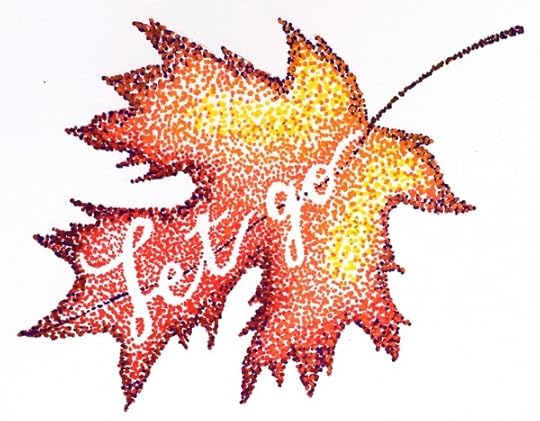
My mind got in the way of my progress as an artist, and I spent much of 2016 stalled out, but by 2017, I was going full force.
Just a few weeks ago, I ran a sale in my shop. Meredith bought a piece of my art. Meredith, whom I got in touch with more than three years and two businesses ago.
After I sent the piece, I emailed her to make sure she’d gotten it and to find out if she liked it. Not only did she like it, but she went online and gave me a five star review in my Etsy shop, then commissioned three more pieces to give as gifts.
I’m telling you this because it astounded and amazed me. A woman I worked with years ago, who didn’t even know I was an artist, has now spent more money on and commissioned more works from me than any other client.

And this isn’t the only time this has happened to me. Another client who started following me in the body image coaching days has also bought art from me, and is very active in commenting on and participating in my social media.
When people like you, they like you. So how do you foster the same thing with your people?
Be yourself. As an entrepreneur and artist, you’re your brand, period. I may have changed careers a bunch of times, but I’m the same honest, open-hearted, sometimes silly person no matter what I’m doing. No, I don’t always share super personal things or my (oftentimes very strong) political opinions, but I do let my essence shine through everything I do.
Be kind. Always and forever. When I was a youth coordinator teaching middle school students not to bully others, I would tell them “you’ll never regret being kind.” The same is true for you in your art business, or any other business venture you ever embark upon. When you’re kind people like you and want to know what you’re up to and, oftentimes, want to spend money on things you’re making. They’ll follow you from career to career or from nature photographer to glass blower.
Foster relationships with your people. If someone takes time to email me after seeing an article I’ve written or gives my art a compliment on social media, I write back. I’m still building my business, so these types of things don’t happen all day, every day, but I hope to always make this time for connection. It all goes back to that one key thing: if people like you, they’ll follow you no matter what you’re up to.
When people buy your work, add personal touches. When I send one of my pieces to a customer, I include a business card, sure, but I always, always send a hand-written note. Sometimes even a little hand-drawn one. I tell every single person I’m thankful for their support. I want them to know that they’re not just a number to me, and I appreciate them.
Let people see the real you, let people know your fears and hopes, and give them something to care about. When you share something that rings true to them, when you let them get to know you, they pay attention, and that often means paying you.
I’m grateful for this experience. I’ve learned that my people aren’t mad that I’m not writing about finding the right career or how to make peace with food—they want to know what I’m doing and how my own path is progressing. They’re proud of me for following my heart, and want to bring some of that to their own lives, too.
Give yourself the gift of sharing the real you with your followers, and you’ll sell more art because of it.
 Jen Picicci is an artist who believes in better living through pretty colors and kind words. She creates uplifting tree and word art, and when she doesn’t have a paintbrush in her hand, she can be found wrangling a preschooler, petting a cat, or hugging a tree. To learn more about her and get a 20% off coupon, visit www.jenpicicci.com.
Jen Picicci is an artist who believes in better living through pretty colors and kind words. She creates uplifting tree and word art, and when she doesn’t have a paintbrush in her hand, she can be found wrangling a preschooler, petting a cat, or hugging a tree. To learn more about her and get a 20% off coupon, visit www.jenpicicci.com.
The post Share the Real You with Your Followers and Sell More Art appeared first on Online Marketing for Artists.
January 17, 2018
Take up Residence in an Artist Community
According to the National Endowment for the Arts, there are approximately 500 artist communities in the United States alone. Their definition of an artist community is an organization focused on providing artist residencies. Have you ever considered applying for an artist’s residency?

What is an Artist Residency?
An artist residency is a space that provides a dedicated time and place for creative work. They can be incredibly valuable for artists of all kinds who work on large short-term projects that require a lot of focus and/or space for a short period of time. They assume different forms including a longer-term collective at an artist colony, a weekend retreat, or a month-long residency. According to The Alliance of Artist Communities, “these creative communities are a diverse group, and provide artists of all disciplines with many different styles and models of support. Residencies can be found in urban or rural areas, serving one artist at a time or 50. Some support one artistic genre while most are interdisciplinary, welcoming visual artists, writers, composers, choreographers, scholars and other creative individuals. There are programs that are active centers for public programs and others that offer solitude and retreat. Many provide room and board as a home-away-from-home; others offer not a place to live, but a community for local artists in which to work and be supported in the creation of new art.”
Would an Artist Residency be a Good Fit for Me?
The great thing about artist residencies is that they can come in so many different forms. The more traditionally defined artist residency is generally understood to be a single residency (some with room-and-board, some without) for a set period of time, anywhere from a few days to a year or longer, in order to complete a creative project. Naturally, this type of residency is a better fit for someone without a heavy responsibility at home such as young children or a day job. There are, however, residencies available that invite spouses/partners, and even children to stay with you for the duration. Another thing to keep in mind is that for longer-term residencies, the artist-in-residence is often expected to lead community workshops or classes.
If you’re a serious artist, whether you have some standing in your field or you’re just emerging, there’s likely a residency out there that fits you. The Alliance of Artists Communities provides a worldwide residency directory with a really useful search tool to help you find residencies in areas you’re interested in. The search function is really useful, allowing you to narrow your search parameters by major discipline, keyword, city/state/country, studio/equipment required, accessibility, and more.
We chatted with Shannon Amidon a while back and she had tons of great resources, tips, and personal experience to share about applying for residencies (and also grants!) so be sure to give that a listen here.
Joining a Community
Artist residencies very often take place in a larger art community that not only provides camaraderie with other artists, but also provides value to the community at large through art workshops, classes, and programs. Your local artist guild can probably connect you with local residency opportunities, as well as regular opportunities for further development of your craft. It’s easy to see why joining a local artist community, whether or not you decide to apply for a residency, is so important.
The one area where artist communities often fall woefully short is business. That’s why we’ve created a new kind of online community to fill in the gap- The Abundant Artist Association. Learn more here.
The post Take up Residence in an Artist Community appeared first on Online Marketing for Artists.
January 10, 2018
Top 5 Inventory Management Apps for Artists
Are you still using an Excel sheet to track all of your inventory, sales, and contacts? It may work for some, but if you’re looking to take your art business to the next level you’ll very likely benefit from inventory software created especially for artists. The great thing is that there is a variety of both free and paid all-online software (which means you can access it from any device anywhere you can connect to the internet). We dug into a few of the top inventory management websites to give you the details.
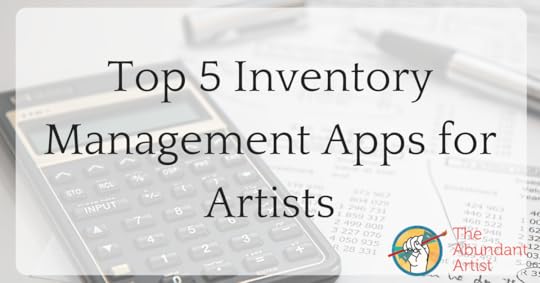
ArtLook (UK)
Features
Detailed artwork catalog with images, categorization, and tagging features.
Hosted website with custom templates.
Promotional materials such as info sheets, catalogues, and price lists. Can share private lightboxes to prospective clients.
Contacts database to keep track of past and present clients and leads.
Sales records, reporting, and invoice generation software.
Software to create consignment records and gallery paperwork.
Price Range
£6-£12 monthly, slightly less for annual payment plan. A £250 express option provides professional assistance with set up of database and website.
The Takeaway
If you’re in the UK and looking for a well built-out option to manage your inventory of works, this is a reasonable option. The monthly price is low, and a website is included (you can use your own domain name, if you have one). The website stresses the flexibility of their platform- you can include as much or as little detail in your database as you need, with the option to track limited-edition print runs as well. If you are looking for a one-stop-shop, ArtLook gets you financial tools and a contact database as well.
Artmoi Studio
Features
Free cataloguing tool with globally unique ID numbers for each work and the option to group the works into collections.
Custom reports
Private and public sharing tools
Mobile app to track works-in-progress with phone pictures
Integration with Shopify
Price Range
Free, with upgrade options
The Takeaway
If all you need is a quick and easy way to track your inventory, ArtMoi is a great choice. The mobile app and cloud storage mean you can update your inventory from anywhere- this may be a good choice for artists that work in a studio outside of the home.
Artwork Archive
Features
Detailed inventory to build a full history for each piece
Reporting features including consignment reporting
Invoicing tools
Contact management
Location tracking and show history
Searching, sorting, and filtering tools
Price Range
$6-$19/month, all options come with a free 30-day trial
The Takeaway
We’ve written about Artwork Archive before and also featured one of the founders, Justin, on our podcast here. If you can spare a few dollars a month, you won’t find a better option out there than Artwork Archive. There is an abundance of features, with more added frequently.
ArtCloud
Features
Inventory management with printable tear sheets
Ability to generate private view sites for clients.
Mobile POS software and e-commerce shopping cart integration
Invoicing and reporting tools
Website integration
Client tracking
Price Range
Free-$49/month (Free option is inventory-only, no extra features)
The Takeaway
ArtCloud offers a good free option for those looking for an inventory platform but without the need for extra services. You can create sub-lists to track pieces in various locations, and there are some helpful features like batch-editing to make life easier. The paid upgrade is quite a bit spendier than other options out there.
ArtLogic
Features
Comprehensive inventory database with branded documents and reports
Contact database
Ability to generate private views for clients.
Website integration
Invoicing tools
Marketing tools
Price Range
$80/month
The Takeaway
Similar to ArtCloud, ArtLogic has a high range of features, but also a much higher price point. The appeal here is the extreme level of detail and integration amongst the various things you can track with the software- the contact database isn’t just an email list, it’s a comprehensive list of all your contacts including past and present clients, what works are in their possession, their locations, all financial history with each person, etc.
With free options and trials available on several of these sites, there’s really no reason not to give inventory management software a try. You may find that the integrations and automation provided by inventory software frees you up to do more of the thing you love most: making art!
Do you use inventory software right now? Love it or hate it? Is there a great website we missed? Let us know in the comments!
The post Top 5 Inventory Management Apps for Artists appeared first on Online Marketing for Artists.
The Abundant Artist Goodreads blog
- Cory Huff's profile
- 31 followers



